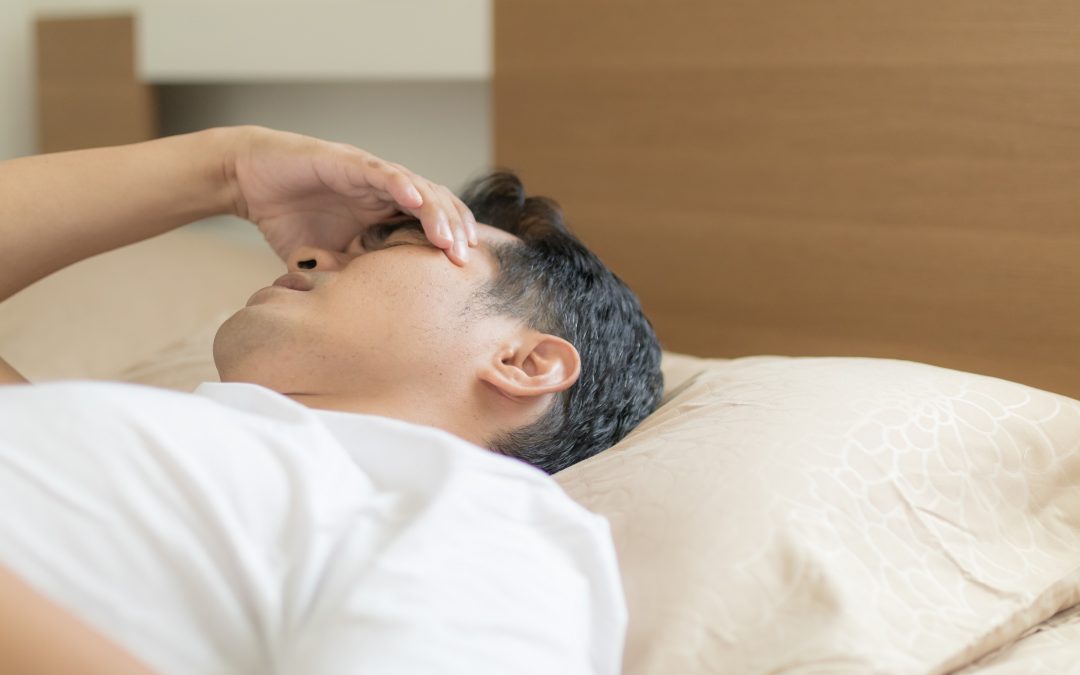by Dr. C Lun Wang | Oct 30, 2018 | Uncategorized

Clenching your jaw has a strong connection to getting headaches. While not all headaches are caused by jaw clenching, most people who do clench their jaws tend to get headaches and sometimes migraines. The primary joint in the jaw structure (the temporomandibular joint or TMJ) is connect to the nerve that is often involved in causing migraines, so clenching of the jaw can cause both migraines and tension headaches from clenching of the muscles around the neck and head.
In general, two types of jaw clenching are common bruxism, when one grinds their teeth or clenches their jaw excessively, and TMJD (temporomandibular joint disorder) which effects the jaw joint and may be caused by stress, injury, or a number of other dental causes.
Treatments can vary for jaw clenching, and will differ depending on which type of clenching you are experiencing and what is causing the clenching. To complicate things, sometimes jaw clenching can actually be caused by headaches that have a different cause – creating an endless cycle of headaches and jaw problems. This is why it is important to consult with a professional to determine the best course of treatment for your jaw concerns and headaches.
One of the simplest ways to try to stop headaches caused by jaw clenching is to become aware when you are clenching your jaw. Take note throughout the day if you are clenching your teeth, and make a conscious effort to relax your jaw. This can make a world of difference to your headaches. Over time, you may be able to build a habit of keeping your jaw relaxed throughout the day.

by Dr. C Lun Wang | Sep 26, 2018 | Uncategorized
Temporomandibular joint disorder (TMD) is described as a problem with the temporomandibular joint (TMJ) in the jaw – usually causing pain with chewing, speaking, or other movement – and often causing headaches.
Causes of TMD
TMD is usually caused by a combination of concerns. Some of these potential causes may include:
- Jaw injury
- Joint disease
- Teeth clenching
- Teeth grinding
- Head and neck tension
- Stress
- Incorrectly fit dentures
- Nail biting
However, TMD can be a vicious cycle that also causes some of the same symptoms that can create the disorder in the first place. For this reason, it is sometimes hard to determine whether the symptom is a result of the TMD or if the TMD is being caused by it.
Treating TMD
TMD is a painful condition that affects many. Luckily, some treatments are simple and can be done at home. Some suggested treatments for TMD include warm or cold compress, massage of the neck and jaw muscles, avoiding hard to chew or sticky foods, and relaxation of the jaw muscles.
In cases of extreme TMJ pain that is not helped by the above suggestions, intervention by a dentist may be indicated. Examination by a dentist who is familiar with the disorder may be of great help to finding relief. A dentist exam for TMD may include x-rays as well as a physical exam.
If your pain continues, further intervention may be necessary – sometimes including surgery.

by Dr. C Lun Wang | Aug 29, 2018 | Uncategorized
What is Whiplash?
Whiplash is a fairly common neck injury, most commonly caused by rear-end motor vehicle accidents. The injury usually involves a strain, sprain, or tear in the soft tissues of the neck which happens when there is a sudden and severe movement in the neck.
Nearly twenty percent of people involved in rear-end car accidents experience neck issues following the event, and some people may find that they continue to have problems such as headaches resulting from the injury for years to come.
Headaches from Whiplash
Pain from whiplash is often worse in the days following the injury, but some symptoms such as headaches may last chronically after the injury is seemingly healed. Common issues resulting from whiplash include neck stiffness, reduced range of motion, neck pain, and headaches.
Headaches resulting from whiplash are usually centered at the back of the head, and are what is known as “cervicogenic” headaches – meaning they are secondary pains caused by a disorder in the cervical spine.
Whiplash Treatment
Whiplash sprains usually heal gradually with time and appropriate treatments. A number of treatments are commonly used for whiplash, and subsequent headaches, including: a collar worn around the neck for comfort, medications such as anti-inflammatories, cold and hot packs, physiotherapy, and sometimes surgery which may be deemed necessary with persistent severe headaches.
Headaches are a fairly common and persistent symptom following a whiplash injury. Depending on the severity of the injury, headache symptoms may fade over time – or may require surgery to correct.

by Dr. C Lun Wang | Jul 24, 2018 | Uncategorized
Headaches can be debilitating to day-to-day life. Often headaches are caused by stress, dehydration, underlying medical conditions – and sometimes the cause may remain unknown. One lesser known cause of headaches may be malocclusion, which is the condition when one’s bite is misaligned. Braces or other orthodontic treatments are usually used to fix a misaligned bite, and can help to alleviate the headache symptoms of malocclusion.
Malocclusion Explained
Malocclusion is a condition in which the top and bottom jaws do not properly align. For a number of reasons, improper alignment of the jaws is fairly common, causing issues with biting and speech – and placing strain on the temporomandibular joints and muscles that control the jaw. Often people with malocclusion have crooked teeth, overbites or underbites, and sometimes tooth decay can be prevalent. Additionally, headaches are common in those who have misaligned jaws.
How to Help Headaches from Malocclusion
Your orthodontist is the best person to address malocclusion – likely through the use of braces to guide the teeth into a more suitable position. A better bite pattern will help to relieve pressure on the jaw muscles and joints, and in turn can alleviate headache symptoms.
Many people may ignore their headache symptoms as being caused by stress or another cause, but when the headaches are frequently accompanied by facial or jaw pain – misalignment of the teeth may be a factor. If you believe that you are experiencing headaches due to malocclusion, you should aim to see your orthodontist for an exam.

by Dr. C Lun Wang | Jun 25, 2018 | Uncategorized
Headaches relating to TMJ (temporomandibular joint disorder) are often misdiagnosed, often being diagnosed as a tension or stress headache. TMJ headaches are unique in a number of ways, but are often preventable and treatable – which could be a huge relief for those whose TMJ pains have been misdiagnosed. By accurately defining what is different about a TMJ headache, we can help patients to find relief before the pain becomes unbearable.
TMJ pain is often accompanied by a number of other symptoms. If you suspect you may be experiencing TMJ pain, pay attention to see if you also experience any of the following:
- Stiffness in the jaw, sometimes making it difficult to open and close your mouth;
- A cracking or grinding noise when you move your jaw;
- Pain or tenderness throughout the face and neck; and
- Fatigue.
There are also a number of symptoms that are unlikely to happen along with TMJ pain, but would show up with other types of headaches. If you are experiencing the following, then TMJ is unlikely to be the direct cause of your headache:
- Nausea;
- Sensitivity to light;
- Sensitivity to sound; and
- Fatigue.
However, a TMJ headache can trigger a migraine which may present with the above symptoms – which is why it is so important to determine if you headache started with any of the traditional symptoms of TMJ pain or not.
Addressing your head pain is vital to your overall health. If your pain is being caused by issues with your TMJ, there may be ways to both prevent and treat the disorder – providing relief where you could not get it before.

by Dr. C Lun Wang | Mar 29, 2018 | Uncategorized
The cause of a headache is often hard to be identified. However, one very common reason for getting a headache can actually be found in the neck – resulting from muscle tension and trigger points.
Causes
At the base of the skull there is a group of muscles, the suboccipital muscles which can be the beginnings of a headache for many people. These four pairs of muscles are responsible for subtle movements between the skull and the first and second vertebrae in the neck. These muscles can become sore and tender due to many factors such as eye strain, wearing new eyeglasses, poor work ergonomics, teeth grinding, slouching, or trauma.
Pain resulting from suboccipital muscles often feels like a band wrapping around the head, and sometimes over the eyes.
Relief for Suboccipital Headaches
- If you believe you are suffering from headaches resulting from the suboccipital muscles, some of these options may help to relieve the pain:
- Seek an eye examination with your optometrist. You may be straining your eyes if your eyes have changed since your last exam;
- Redesign your workstation. You may be getting headaches from poor ergonomics at work – raising your computer monitor or moving your desk so that you do not have to crane your neck may help with headaches;
- Correct your posture. Consider gentle exercise such as yoga or pilates to encourage proper self-carriage;
- Apply a hot pack to the base of the neck for 15-20 minute intervals when you experience a tension headache.
Headaches that feel like a band around the head or run through the eyes are often a form of tension headache, caused by the muscles in the neck. Use this guide to combat them.







